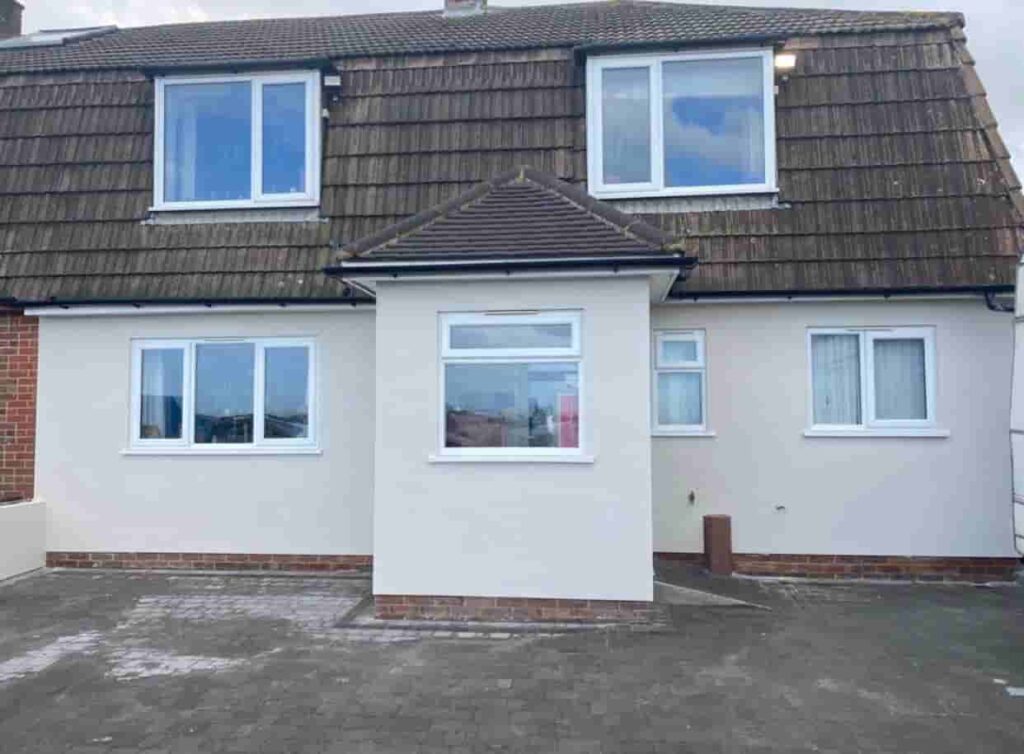Flat roofs are a popular choice for many homes and commercial properties in Amesbury, Wiltshire, thanks to their modern look and space-saving benefits. However, they can be prone to leaks if not properly maintained or installed. A leaking flat roof can lead to costly repairs, structural damage, and even health risks due to damp and mould.
Understanding why flat roofs leak and how to prevent future issues can help you protect your property and avoid unnecessary expenses.
Common Causes of Flat Roof Leaks
1. Poor Drainage and Water Pooling
Unlike pitched roofs, flat roofs have minimal slope, meaning water can pool if drainage is inadequate. Standing water can break down roofing materials over time, leading to leaks.
Solution: Regularly inspect and clear gutters and drainage outlets. Installing additional drainage points can also help to prevent pooling.
2. Damaged or Worn Roofing Material
Exposure to the elements can cause roofing materials to deteriorate. UV rays, heavy rain, and strong winds can weaken the surface, making it more susceptible to cracks and leaks.
Solution: Use high-quality, durable materials such as EPDM rubber or fibreglass for better longevity. A professional inspection can identify wear before it becomes a major issue.
3. Poor Installation or Workmanship
Improperly installed flat roofs are one of the main reasons leaks develop. If seams are not sealed correctly or materials are not properly bonded, water can easily seep through.
Solution: Always use an experienced roofing specialist to install or repair your flat roof to ensure the job is done to a high standard.
4. Cracks and Blisters in the Roof Surface
Over time, air pockets or blisters can form due to trapped moisture beneath the surface. These can eventually crack, allowing water to penetrate.
Solution: Regular inspections can identify these weaknesses early. Prompt repairs will prevent further deterioration.
5. Faulty Flashing and Seals
Flashings around chimneys, vents, and edges play a crucial role in keeping water out. If they become loose or damaged, leaks can occur.
Solution: Ensure flashings and seals are checked and maintained as part of your routine roof care. Replacing them when needed will keep your roof watertight.
How to Stop Flat Roof Leaks for Good
Regular Roof Inspections and Maintenance
The best way to prevent leaks is to schedule regular inspections. A professional roofer can identify early signs of damage before they lead to serious issues.
Upgrade to Modern, Leak-Resistant Materials
Older roofing materials may not provide the same level of protection as modern alternatives. Consider upgrading to high-performance materials such as GRP fibreglass, EPDM rubber, or single-ply membranes for enhanced durability.
Improve Drainage Systems
If your flat roof suffers from persistent water pooling, installing additional drains or adjusting the slope slightly can help water flow away more efficiently.
Apply Protective Coatings
Waterproof coatings can provide an extra layer of protection against the elements. Liquid waterproof membranes are particularly effective in sealing small cracks and prolonging the lifespan of your roof.
Address Repairs Promptly
If you notice signs of wear, don’t wait for the problem to escalate. Quick repairs can save you from more extensive (and expensive) damage down the line.
Conclusion
A leaking flat roof is not just an inconvenience—it can cause significant damage if left untreated. Understanding the causes of leaks and taking proactive steps to prevent them will help keep your property protected.
If your flat roof is showing signs of damage or you need expert advice, contact MCM Roofing Repairs Amesbury. Our experienced team can assess your roof, recommend effective solutions, and ensure your property remains safe and watertight for years to come.
Call us on: 01980 880 394
Click here to find out more about MCM Roofing Repairs Amesbury
Click here to complete our contact form and see how we can help with your roofing needs.

